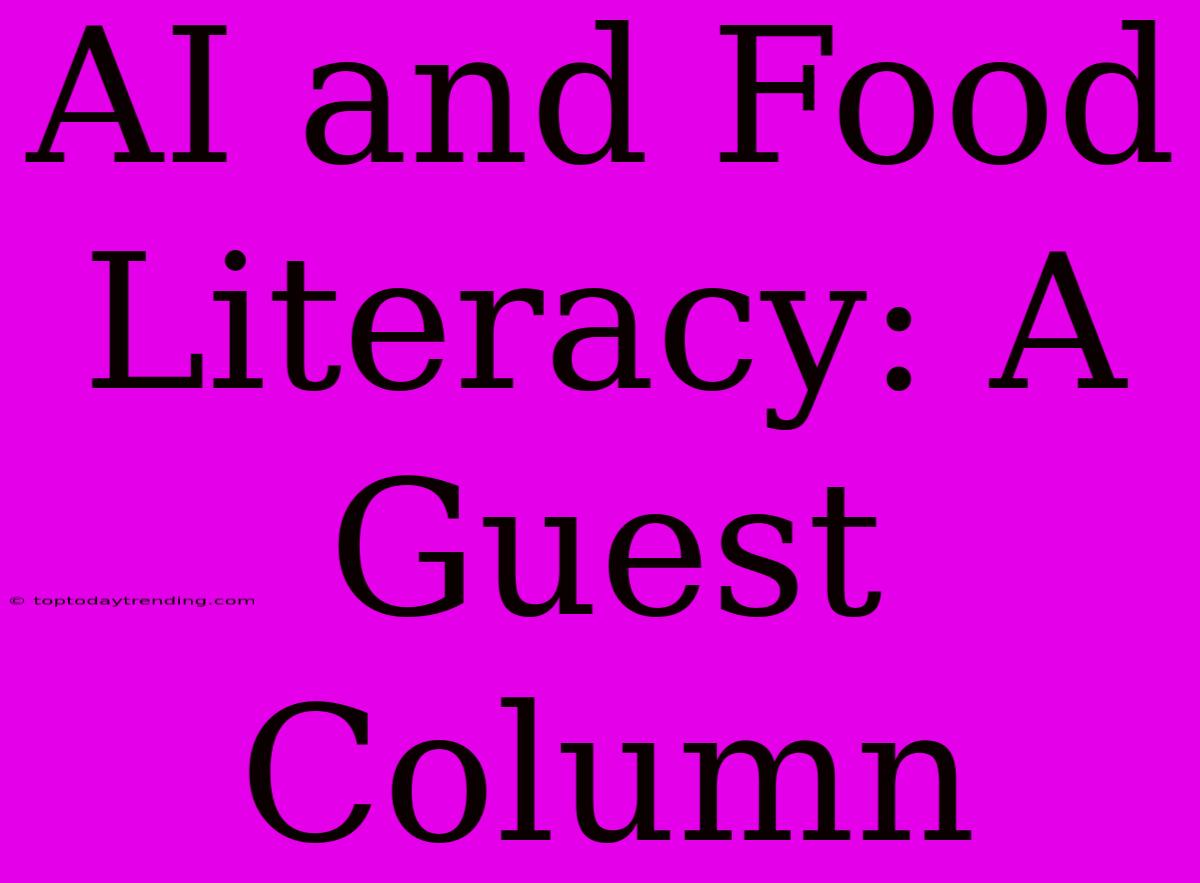AI and Food Literacy: A Guest Column
The future of food is being shaped by Artificial Intelligence (AI). From optimizing agricultural practices to revolutionizing the way we eat, AI is already making a significant impact on our food systems. However, this technological leap forward comes with a crucial caveat: the need for food literacy.
What is Food Literacy?
Food literacy encompasses understanding the entire food system, from production and distribution to consumption and waste. It's about knowing where your food comes from, how it's produced, and how it impacts your health, the environment, and society. It empowers individuals to make informed choices about their food, fostering a deeper connection with the food they eat.
AI: A Catalyst for Food Literacy?
While AI can automate processes and optimize production, its true potential lies in its ability to enhance food literacy. Here's how:
1. Transparency and Traceability:
AI-powered platforms can track food from farm to table, creating a transparent supply chain. Consumers can easily access information about the origin, processing, and journey of their food. This fosters trust and encourages informed purchasing decisions.
2. Personalized Nutrition Recommendations:
AI algorithms can analyze dietary needs and preferences, offering personalized meal plans and recommendations. This can help individuals achieve their health goals and make healthier food choices.
3. Combating Food Waste:
AI can predict demand, optimize inventory, and manage logistics, reducing food waste at various stages of the food system. By understanding food waste patterns, AI can promote sustainable food practices and reduce environmental impact.
4. Educational Resources:
AI-powered chatbots and interactive platforms can provide accessible and engaging food literacy education. These resources can teach consumers about healthy eating habits, sustainable agriculture, and the social and environmental impact of food choices.
The Need for Responsible Implementation:
While AI presents a vast opportunity for advancing food literacy, it's important to implement these technologies responsibly. We must address concerns around data privacy, access to technology, and equitable distribution of benefits.
Conclusion:
The future of food is undoubtedly intertwined with AI. However, harnessing this technology to promote food literacy is crucial. By empowering individuals with knowledge and understanding, we can navigate the evolving food landscape responsibly, ensuring that everyone has access to safe, nutritious, and sustainable food. The key lies in embracing AI as a tool for education, not just automation, and ensuring that the benefits of this technological revolution reach everyone.

